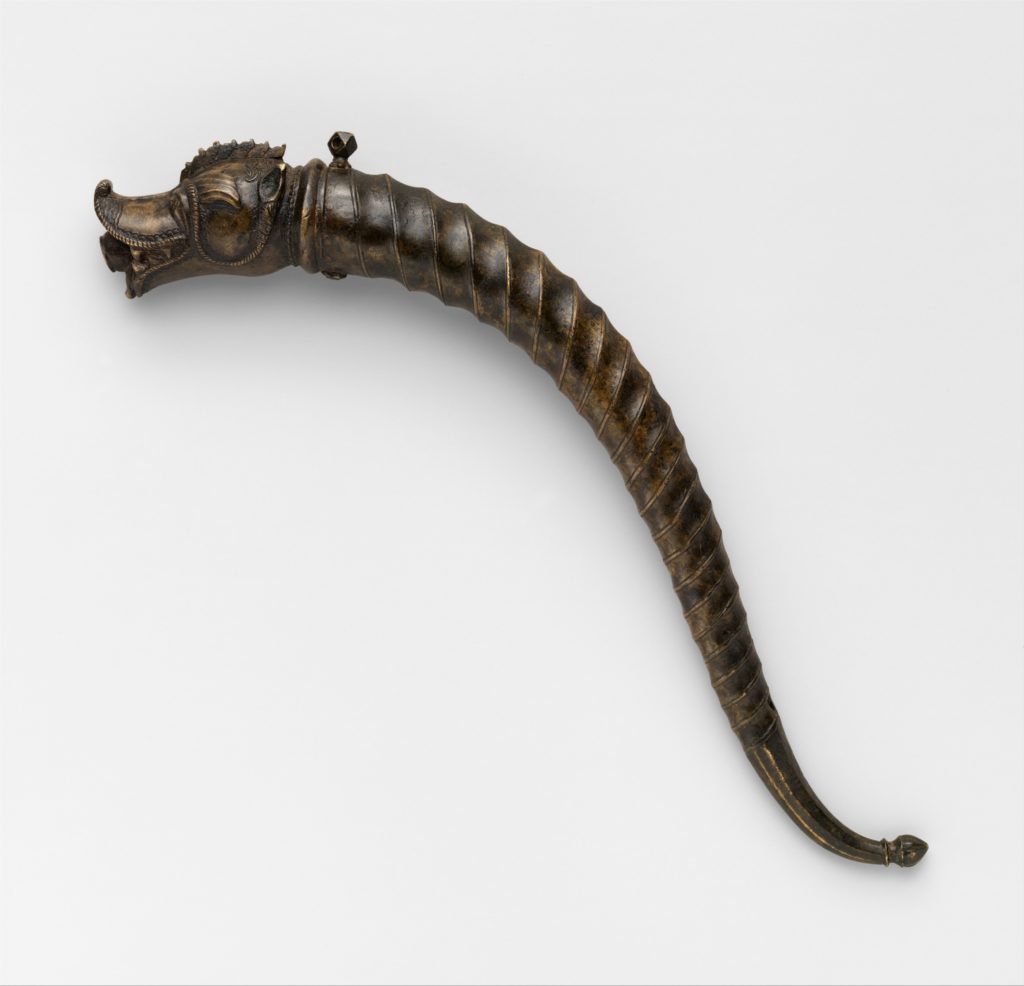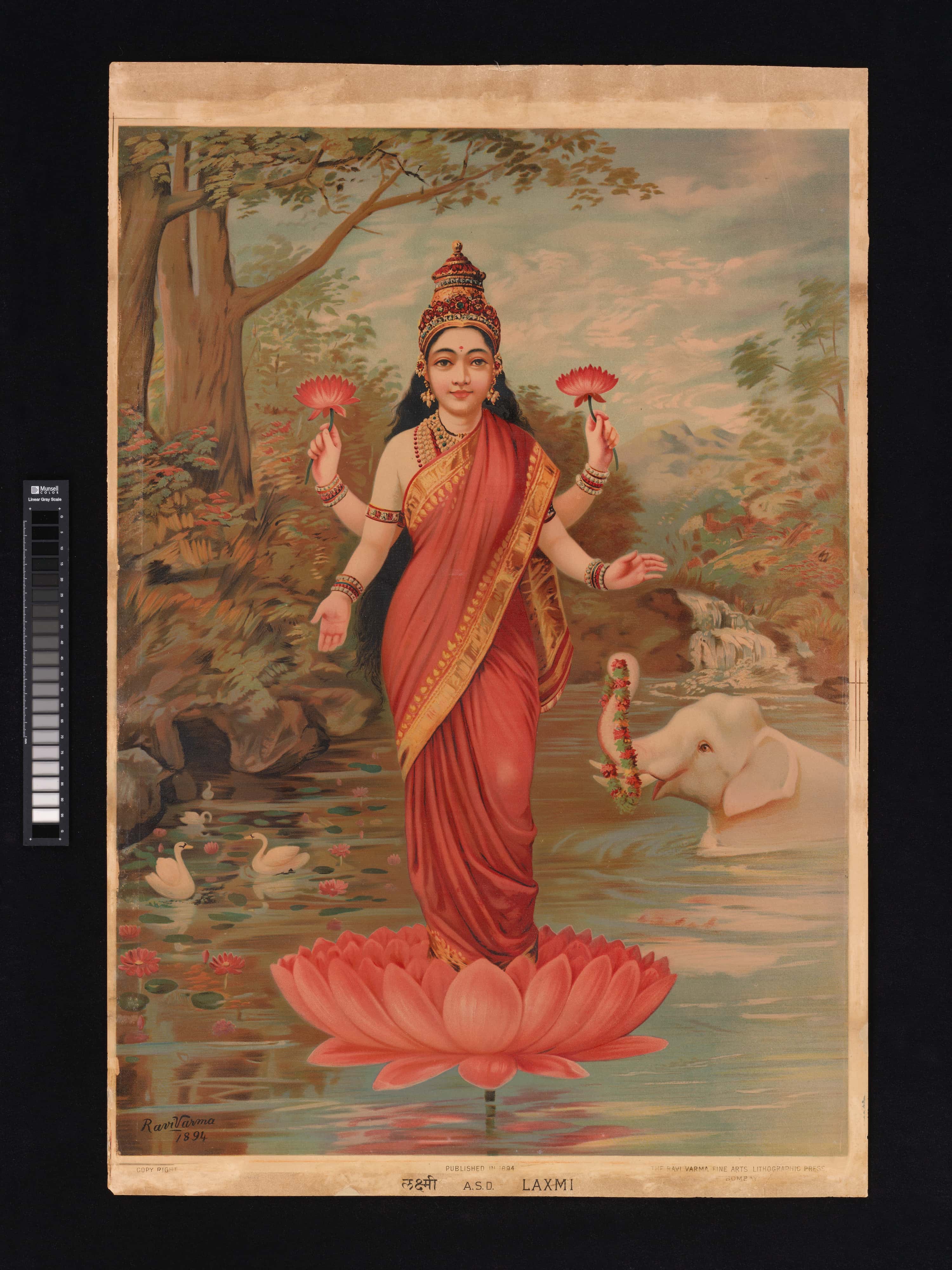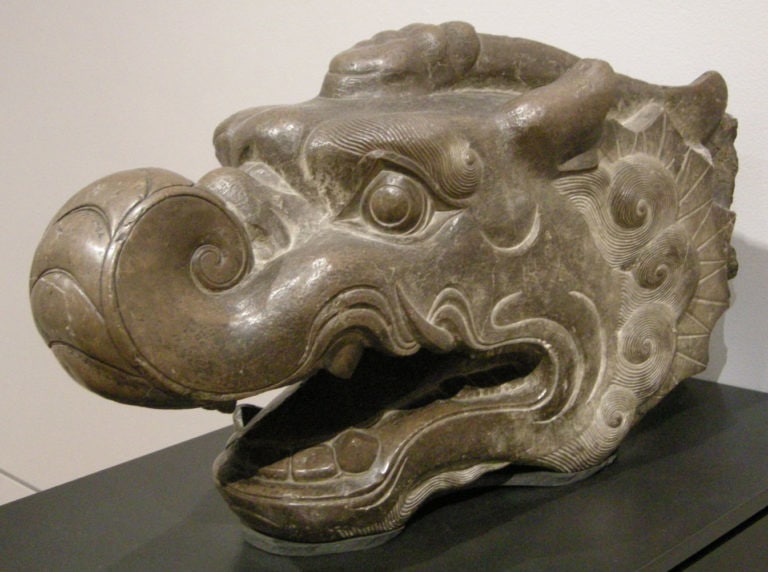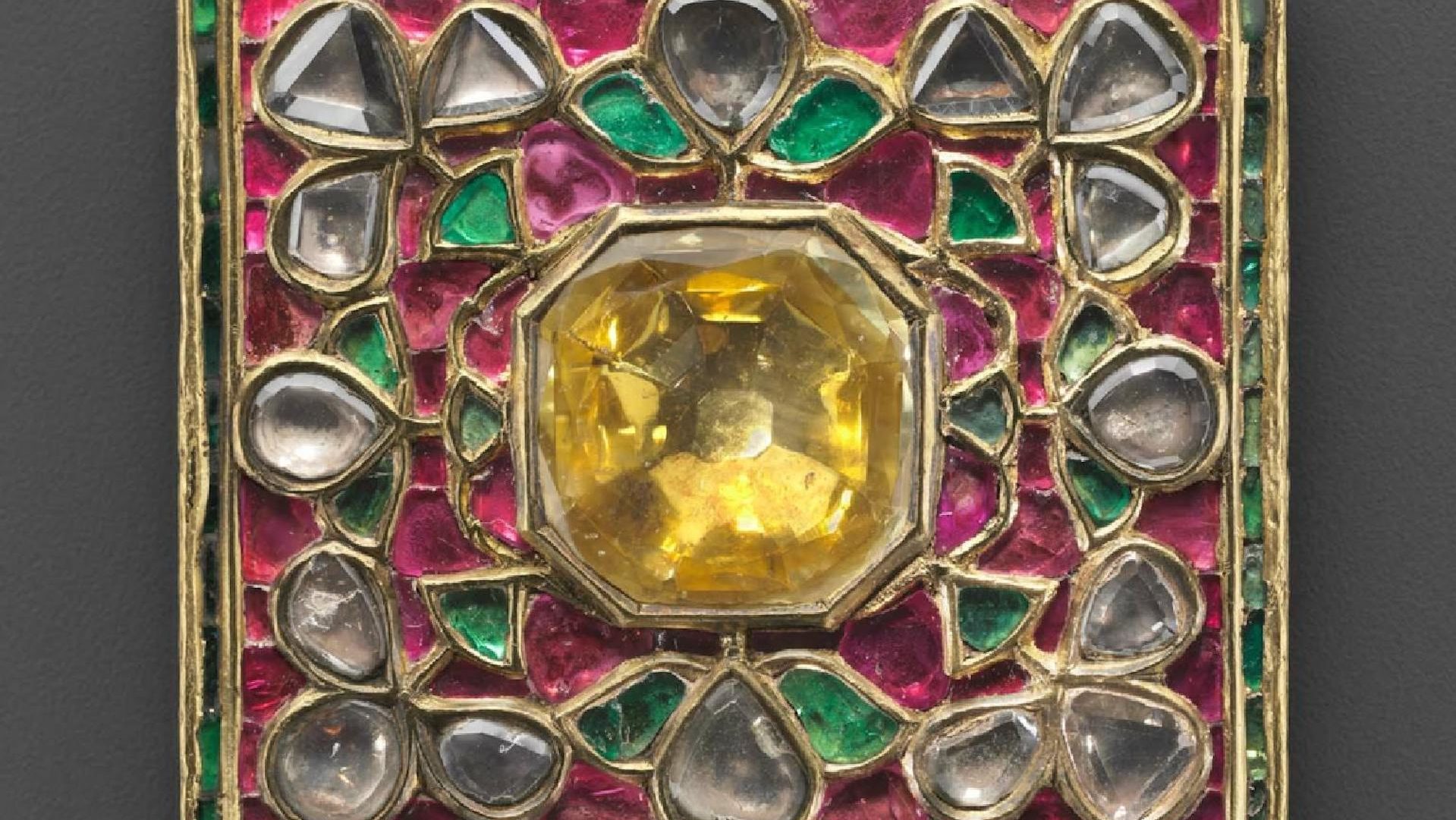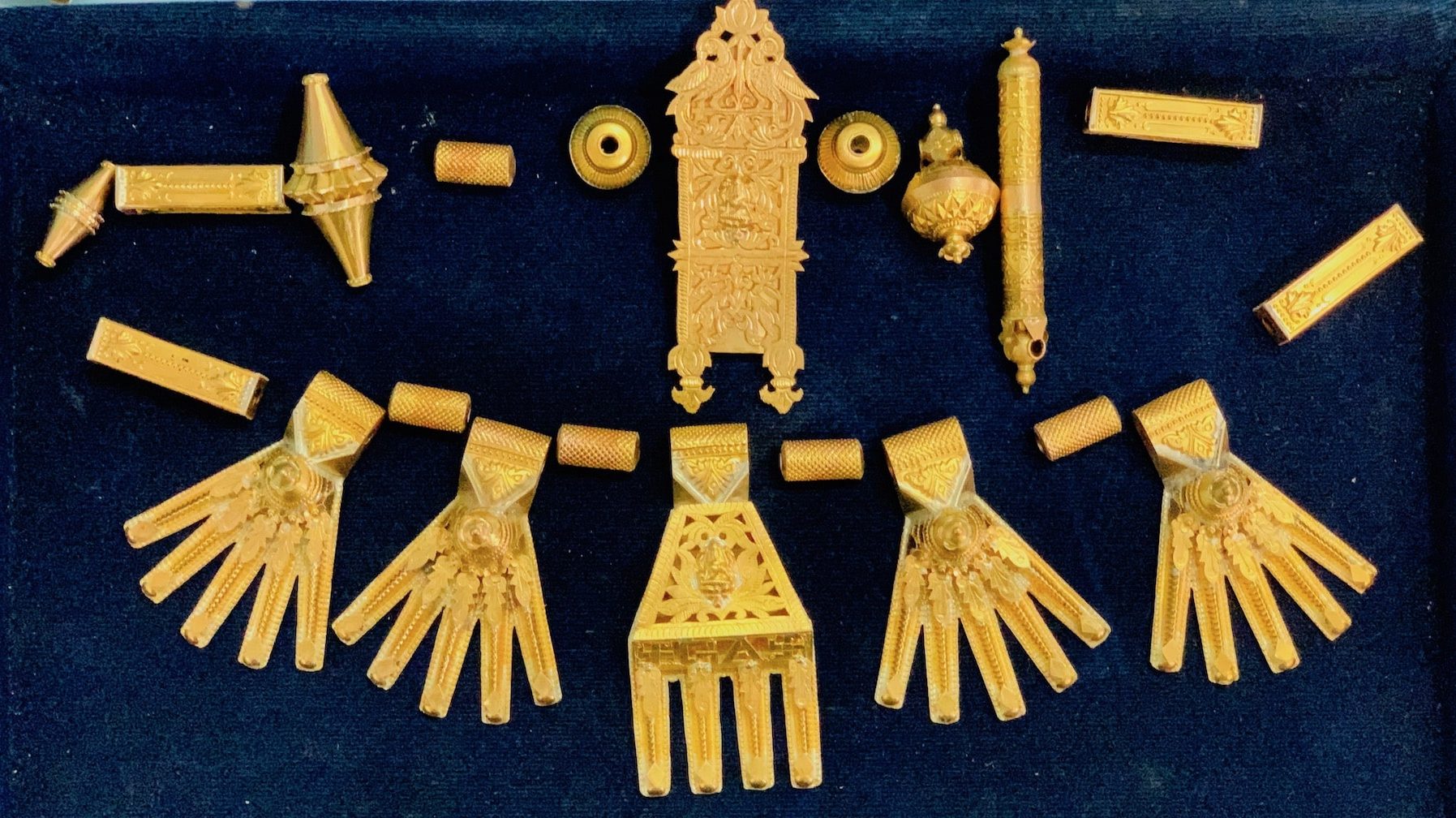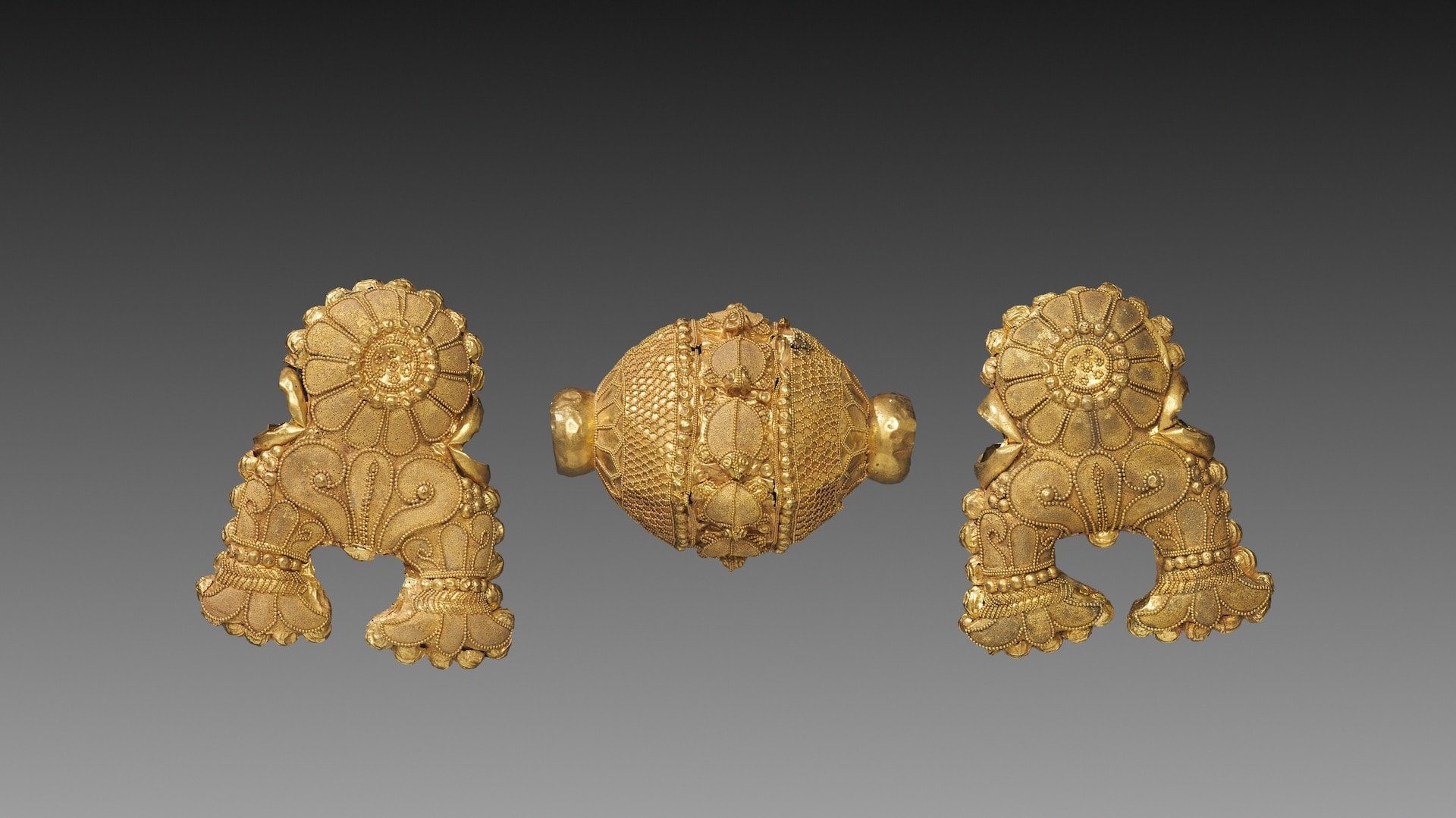The Makara travelled the world.
It first appears in a seal in the Indus Valley– a fearsome sea creature that overturns ships going on ocean voyages.
Every subsequent text, ranging from the Puranas to the Jatakas talk about the gruesome makara that kills voyaging sailors.
No wonder early Indians developed a distaste for ocean crossings and forbade caste Brahmins to cross the oceans.
Jewels. Temples. Even weaponry.
For a riverine civilization like India, creatures that dwelled under water were sources of fear and fascination.
Bengali stories talk about the makara lying in wait under water, dragging unsuspecting young girls who come to fill water in their pots and devouring them in a sea of bubbles.
Makara in literature
As Steven Darian explains in his excellent essay here, the makara makes its appearance in the Raghuvamsa where plotters are compared to silent makaras lying in wait to strike. In the Mahabharata, the Kauravas have a battle formation called the makara, which is beaten by Bheema. The nava nidhis or nine treasures of Kubera include the makara.
Lakshmi in her Makaralayam.
Temples all over Southeast Asia have the makara thorana: a garland that begins at the mouth of two makaras on either side of the temple entrance and joining to become a kirtimukha (ghoulish face or ‘face of glory’) in the centre. The makara is linked to the kirtimukha or the face of glory through this story.
The gory lion-faced kirtimukha takes on the dangerous qualities while the makara grows gentle, tamasic, old, leaning towards death.
No wonder, in Hindu astrology, the makara is the sign for Capricorn, the door of the gods.
The makara travels everywhere. Although in real life the makara is rooted in India.



